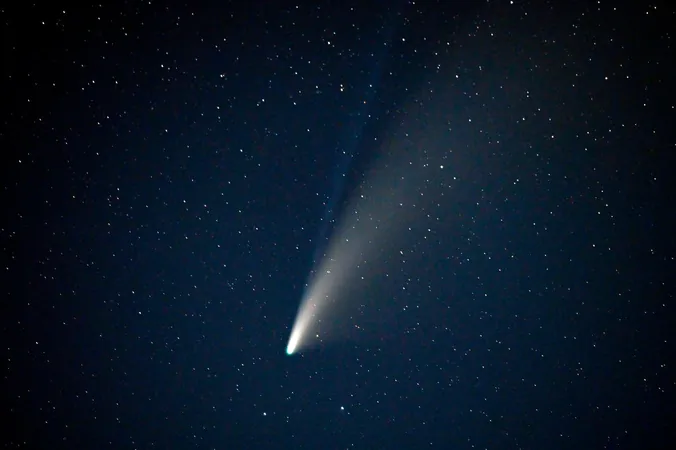
Don’t Miss the Celestial Spectacle! Comet A3’s Stunning Slingshot to Sunset – How and When to Spot It!
2024-10-03
Get ready, stargazers! The much-anticipated Comet A3, also known as C/2023 A3 (Tsuchinshan-ATLAS), is making headlines as it prepares for an exciting appearance in October. Though early reports suggest that it isn't quite a naked-eye object yet, it’s still a mesmerizing sight through photography.
A Special Appearance: When Will Comet A3 Shine?
As October unfolds, Comet A3 will begin its descent from the early morning sky into the vibrant hues of sunset. Mark your calendars—October 12 is when the comet makes its closest approach to Earth, at a distance of about 44 million miles (71 million km). After this date, it will slowly rise into the majestic evening sky, ideal for viewing.
Viewing Guide: October Highlights
The best time to catch a glimpse of Comet A3 will be shortly after sunset. From October 12 to 16, observers in the northern hemisphere should look west shortly after the sun dips below the horizon. Reports suggest that it could be shining at a dazzling magnitude of +2.8, making it relatively easy to see with the naked eye—perfect for even casual watchers!
When and Where to Spot Comet A3:
- **October 12-16:** Prime viewing begins on October 12 when the comet will be closest to Earth. Sunset in the U.S. will occur just after 7 p.m. local time. During this time, it will reflect sunlight beautifully, thanks to its position between the sun and Earth, creating a phenomenon known as “forward scattering.” - **October 17-19:** As we move towards mid-October, the comet will transition into the constellation Serpens, positioned above bright Venus. Its visibility in the darkening sky will be enhanced, with the comet lowering in brightness slightly but still within naked-eye visibility. - **October 20-31:** After a fantastic display, Comet A3 will enter Ophiuchus, reaching higher degrees from the sun but dimming to a magnitude of +4 to +6. While it may no longer be visible to the naked eye in the latter stages, binoculars or a small telescope will ensure you don’t miss this stellar visitor.
Tips for Catching the Comet
- **Timing is Everything:** Ensure you look for the comet within 15-20 minutes after sunset. - **Find a Dark Spot:** Escape city lights for optimal viewing. - **Use Binoculars:** If visibility is low, binoculars can enhance your view of this cosmic wonder.
Stay tuned to our updates for a daily "Comet Tracker" featuring sky charts and viewing tips to enhance your experience of Comet A3. Don’t let this celestial event pass you by—clear skies and a stunning view await! Get out there under the stars and witness the magic of Comet A3 before it's gone!









 Brasil (PT)
Brasil (PT)
 Canada (EN)
Canada (EN)
 Chile (ES)
Chile (ES)
 España (ES)
España (ES)
 France (FR)
France (FR)
 Hong Kong (EN)
Hong Kong (EN)
 Italia (IT)
Italia (IT)
 日本 (JA)
日本 (JA)
 Magyarország (HU)
Magyarország (HU)
 Norge (NO)
Norge (NO)
 Polska (PL)
Polska (PL)
 Schweiz (DE)
Schweiz (DE)
 Singapore (EN)
Singapore (EN)
 Sverige (SV)
Sverige (SV)
 Suomi (FI)
Suomi (FI)
 Türkiye (TR)
Türkiye (TR)